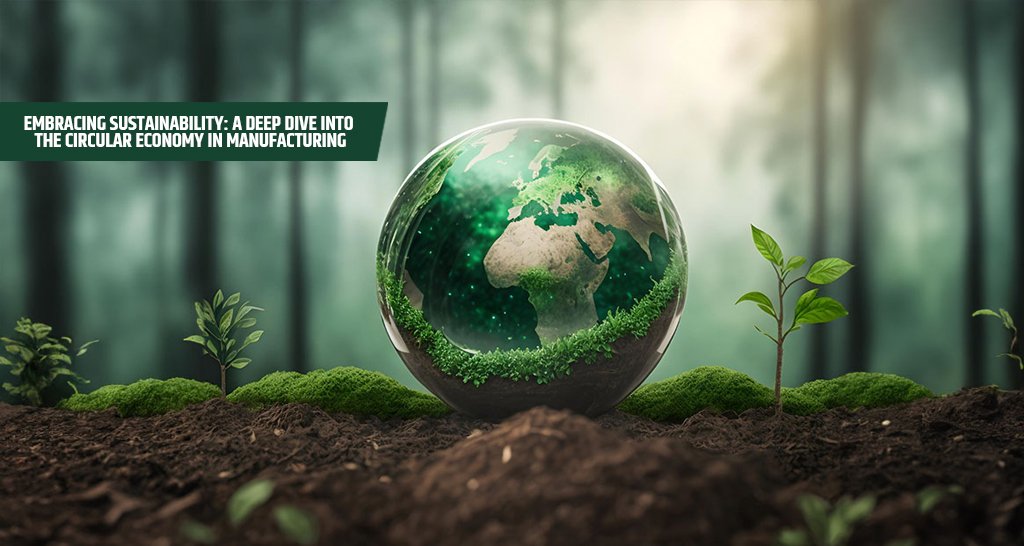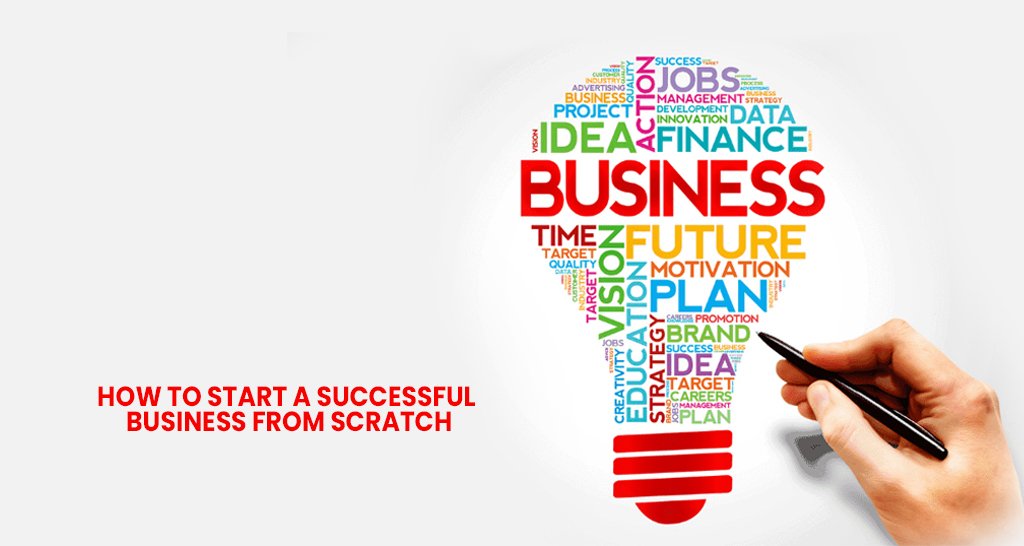Introduction to Circular Economy
The circular economy represents a transformative approach to production and consumption that prioritizes sustainability and resource efficiency. Unlike the traditional linear economy model, which follows a ‘take-make-dispose’ pattern, the circular economy emphasizes the continuous cycle of production, reuse, and recycling. This innovative model is critical for addressing the pressing global challenges of environmental degradation, resource depletion, and waste generation.
At the heart of the circular economy is the principle of designing products and systems that facilitate the regeneration of resources and minimize waste. This approach not only supports the conservation of natural resources but also enhances economic resilience by reducing reliance on finite materials. By embracing circularity, businesses can create value while simultaneously benefiting the environment, thus leading to a more sustainable future.
Implementing a circular economy fosters resource efficiency across various sectors, encouraging companies to rethink their supply chains and product designs. This may include using sustainable materials, adopting modular designs for easier repair and upgrade, and developing closed-loop systems that allow for the recovery and repurposing of materials. As a result, waste is significantly reduced, leading to less pollution and a healthier ecosystem.
The shift towards a circular economy is crucial for mitigating the negative impacts of climate change and promoting environmental protection. By transitioning from a linear to a circular model, industries can innovate in ways that help achieve sustainability goals. Establishing policies that support circular practices and promoting public awareness will further facilitate this transition, ensuring that the benefits of this model are realized on a broader scale. As we move forward, adopting circular economy principles will be instrumental in enabling sustainable manufacturing and fostering a healthier planet.
Principles of Circular Economy
The principles of circular economy are fundamental to transforming current manufacturing practices into more sustainable models. At the heart of this approach is the concept of designing products for longevity. By prioritizing durability in product design, manufacturers can reduce the need for frequent replacements, thereby conserving resources and minimizing waste. This commitment to longevity encourages the production of goods that not only meet consumer needs but also stand the test of time, resulting in lower environmental impact.
Another essential principle is maintenance. Implementing regular maintenance practices ensures that products remain functional for an extended period. By educating consumers on proper care and maintenance, manufacturers can significantly prolong the lifecycle of their products. Furthermore, repair and refurbishing initiatives empower consumers with the option to restore products rather than discard them. This not only mitigates waste in landfills but also fosters a culture of repair, where valuing older items becomes the norm rather than the exception.
Recycling is an integral component of the circular economy. Through established recycling processes, manufacturers can recover valuable materials from end-of-life products, reintegrating them into the production cycle. This not only reduces the dependency on virgin resources but also lessens the environmental footprint associated with material extraction and processing. Lastly, sustainable sourcing emphasizes the necessity of obtaining materials in an environmentally and socially responsible manner. By prioritizing renewable resources and ethically sourced materials, manufacturers can ensure their operations contribute to the larger goal of ecological balance.
In summary, the principles of the circular economy advocate for sustainable manufacturing practices through design for longevity, maintenance, repair, recycling, and sustainable sourcing, creating a holistic framework that addresses resource efficiency and waste reduction.
Challenges in Traditional Manufacturing Processes
Traditional manufacturing processes have long been associated with a range of limitations and environmental challenges that raise significant concerns in today’s context of sustainability. One of the most pressing issues is resource depletion, where the extraction and use of natural resources—such as metals, fossil fuels, and water—are executed in quantities that surpass the Earth’s ability to regenerate these resources. This unsustainable approach not only threatens the availability of materials for future generations but also escalates competition for those remaining resources, leading to increased costs and geopolitical tensions.
Another critical issue is pollution. Traditional manufacturing often involves chemical processes that emit harmful pollutants into the air, water, and soil. Industries such as textiles, electronics, and chemicals can release toxic substances that contaminate natural ecosystems, compromising both environmental health and human welfare. The resultant air and water pollution can lead to significant health issues, affecting populations living near manufacturing sites and contributing to a wider public health crisis.
Waste generation is an equally alarming consequence of conventional manufacturing practices. The linear model of “take, make, dispose” creates substantial amounts of waste, much of which ends up in landfills. This not only contributes to landscape degradation but also involves significant costs for disposal and management. Furthermore, many materials used in traditional production processes are non-biodegradable, which exacerbates the challenge of waste management and environmental resilience.
Considering these limitations and challenges, there becomes a compelling rationale for the transition towards circular economy practices. By emphasizing resource efficiency, waste reduction, and pollution prevention, manufacturers have the opportunity to transform their operational frameworks, ultimately fostering a more sustainable approach to production while mitigating the environmental impacts intrinsic to traditional methods.
Benefits of Circular Economy for Manufacturers
The adoption of circular economy principles offers numerous advantages for manufacturers, fundamentally redefining traditional production systems. One of the primary benefits is the potential for significant cost savings. By reusing materials and resources, manufacturers can reduce waste and decrease the costs associated with raw materials acquisition. Implementing efficient processes that optimize resource use leads to lower production expenses and can ultimately enhance profit margins.
Moreover, embracing a circular economy can strengthen a manufacturer’s brand reputation. As consumers become increasingly concerned about environmental sustainability, companies that prioritize eco-friendly practices often stand out in a crowded marketplace. Manufacturers that actively promote their commitment to sustainable practices can attract a loyal customer base, enhancing their competitive edge. A strong brand identity centered around sustainability not only cultivates customer loyalty but can also lead to positive word-of-mouth referrals, fostering further business growth.
Compliance with environmental regulations is another critical advantage of the circular economy. As governments worldwide tighten regulations related to waste management and resource efficiency, manufacturers that adopt circular practices are better positioned to meet these requirements. Proactively implementing sustainable manufacturing techniques minimizes the risk of costly penalties associated with non-compliance and prepares manufacturers for future regulatory changes.
Additionally, the circular economy fosters innovation within manufacturing sectors. By redesigning products for longevity and recyclability, manufacturers can tap into new markets, develop innovative solutions, and enhance operational efficiency. This not only ensures the responsible use of materials but also aligns with evolving consumer expectations for sustainable products.
In conclusion, the benefits of adopting circular economy principles are manifold, ranging from cost efficiency and enhanced brand reputation to regulatory compliance and increased customer loyalty. As manufacturers navigate an increasingly eco-conscious world, integrating these practices is vital for sustainable growth and long-term success.
Case Studies of Circular Economy in Manufacturing
The concept of circular economy has gained significant traction in various industries, with numerous manufacturers implementing practices that prioritize sustainability and resource efficiency. One prominent example is Apple Inc., which has adopted a circular economy approach through its robust recycling programs. By designing products for longevity and recyclability, the company aims to minimize electronic waste. Their efforts are exemplified by the use of recycled aluminum in MacBook casings and the introduction of the Daisy robot, designed to disassemble old devices and recover valuable materials for reuse. This not only reduces the environmental impact but also helps Apple secure a steady supply of raw materials, aligning profitability with sustainability.
Another notable case is that of Unilever, a prominent player in the consumer goods sector. The company launched the Sustainable Living Plan, which emphasizes reducing waste and using sustainable sourcing methods in their manufacturing process. Unilever’s “Love Beauty and Planet” campaign focused on utilizing recycled plastic in product packaging and promoting the development of refill stations to reduce single-use plastic. This initiative not only reduces the carbon footprint associated with their products but also appeals to conscientious consumers, fostering brand loyalty and enhancing market competitiveness.
A further illustrative example is the furniture manufacturer IKEA. They have initiated a ‘People and Planet Positive’ strategy aimed at becoming a circular business by 2030. This includes designing products that can be reused, repaired, and recycled, alongside innovative take-back schemes allowing customers to return old furniture for resale or recycling. Such initiatives have led IKEA to not only mitigate waste but also tap into new revenue streams. By embracing circular economy principles, these companies demonstrate that sustainability can coexist with profitability, navigating challenges while garnering competitive advantages in their respective markets.
Technological Innovations Supporting Circular Economy
The transition to a circular economy hinges significantly on various technological innovations that facilitate sustainable manufacturing practices. Key advancements in recycling technologies have emerged, enabling more efficient recovery and repurposing of materials. For instance, innovations in chemical recycling are allowing complex plastics to be broken down into their original monomers, consequently creating a high-quality feedstock that can be reused repeatedly. Such advancements not only reduce waste but also minimize the reliance on virgin materials, contributing to the essence of a circular economy.
Additionally, the Internet of Things (IoT) plays a pivotal role in enhancing resource management within the manufacturing sector. Through the deployment of smart sensors and connected devices, manufacturers can monitor resource usage in real-time, leading to improved efficiency and waste reduction. By collecting data on material flows, energy consumption, and equipment performance, businesses can optimize their processes and make informed decisions that support sustainability goals. For example, predictive maintenance can avert equipment failures, thereby extending the lifespan of machinery and reducing operational waste.
Automation technologies also significantly bolster circular economy initiatives. Robotics and advanced manufacturing techniques streamline production processes while ensuring a minimal ecological footprint. Automated sorting systems can refine the material recovery process by accurately identifying and separating recyclable materials. Moreover, additive manufacturing, commonly known as 3D printing, allows for the creation of products with less material usage and the capacity to utilize recycled inputs. This transformation in manufacturing practices promotes a closed-loop system where materials are continually cycled back into the production process.
Incorporating these technological advancements into manufacturing practices not only supports the principles of a circular economy but also positions businesses as leaders in sustainability. By embracing innovation, manufacturers can achieve both economic performance and environmental responsibility, fostering a more sustainable future.
Policy and Regulation Support for Circular Economy
The transition towards a circular economy is significantly influenced by policy and regulation at various governmental levels. International agreements such as the Paris Agreement highlight the importance of sustainability and encourage nations to adopt practices that minimize waste and promote resource efficiency. These agreements serve as a framework within which countries can develop their own national policies that align with global sustainability goals. Nations are increasingly recognizing the need for legislative measures that catalyze the circular economy.
National policies play a crucial role in promoting circular economy practices. For instance, many countries have established new regulations aimed at reducing single-use plastics, incentivizing recycling, and mandating product design that facilitates reuse. The European Union’s Circular Economy Action Plan is a pertinent example, outlining a series of measures to support sustainable production and consumption throughout Member States. Countries implementing similar policies tend to create a more intentional market environment where manufacturers invest in sustainable materials and processes, subsequently encouraging innovation in circular business models.
On a local level, municipalities play a vital role in facilitating circular economy initiatives. Local governments can implement waste management programs that prioritize recycling and composting, creating a responsible culture around disposal practices. They can also provide incentives for businesses that adopt circular approaches, such as grants, tax breaks, or technical support. Community-level engagement, where local stakeholders participate in sustainable initiatives, fosters a deeper understanding of the benefits associated with a circular economy. By linking local actions with broader national and international policies, the collective impact can significantly enhance the transition toward sustainable manufacturing.
In conclusion, effective policies and regulations are imperative for fostering a circular economy. By aligning international frameworks, national policies, and local initiatives, stakeholders can drive the necessary changes that support sustainable manufacturing processes across industries.
Strategies for Transitioning to a Circular Economy
The transition to a circular economy model can be a transformative journey for manufacturers. It requires a systematic approach that emphasizes sustainability, resource efficiency, and stakeholder involvement. One of the first steps in this process is conducting a comprehensive assessment of current practices. Manufacturers should evaluate their production methods, waste management processes, and supply chain dynamics to identify areas where they can enhance circularity. This assessment will provide valuable insights into existing inefficiencies and opportunities for improvement.
Next, engaging stakeholders is critical to the successful implementation of a circular economy model. Manufacturers should involve employees, suppliers, customers, and even local communities in discussions about sustainability goals and practices. By fostering a culture of collaboration, manufacturers can leverage diverse perspectives and expertise to develop innovative solutions. Stakeholder engagement can also play a vital role in building support for transition initiatives and ensuring that all parties are aligned with the organization’s sustainability objectives.
Resource mapping is another essential strategy. This involves identifying and tracking all inputs, outputs, and materials throughout the production process. By understanding resource flows, manufacturers can pinpoint where materials can be reused, recycled, or repurposed more effectively. Such mapping enables organizations to design systems that minimize waste and optimize resource use, aligning perfectly with the principles of a circular economy.
Finally, it is imperative to develop a robust implementation plan. This plan should outline clear objectives, timelines, and key performance indicators to measure progress. Additionally, it should include training programs for employees to facilitate a deep understanding of circular economy principles and practices. By systematically integrating these strategies, manufacturers can successfully transition to a circular economy model, thus contributing to a more sustainable future for the industry.
Future Outlook: Circular Economy and Sustainable Manufacturing
The future of circular economy in the manufacturing sector holds significant promise as businesses increasingly embrace sustainable practices. Emerging trends indicate a shift towards more innovative processes, including product-as-a-service models, where companies retain ownership of the product while customers pay for its use. This minimizes waste and fosters a deeper relationship between manufacturers and consumers, as companies are incentivized to create longer-lasting, easily repairable products.
In addition to product-as-a-service, the integration of advanced technologies such as artificial intelligence, automation, and the Internet of Things (IoT) is reshaping manufacturing processes. These technologies can optimize resource usage, track product life cycles, and enhance recycling capabilities, promoting a circular approach. For instance, smart sensors can monitor the quality of materials during production, reducing waste and improving efficiency. Such advancements not only contribute to sustainability but can also result in cost savings, providing businesses with a strong incentive to adopt circular principles.
Despite these encouraging developments, certain barriers must be addressed to fully realize the potential of a circular economy in manufacturing. Resistance to change, high initial investments, and a lack of awareness among stakeholders can hinder progress. Therefore, companies must focus on education and collaboration across supply chains, fostering an environment where innovation can thrive. By partnering with other organizations, manufacturers can share knowledge and resources, enabling them to overcome hurdles associated with the transition to sustainable practices.
As businesses continue to navigate this evolving landscape, they must remain adaptable and proactive in identifying opportunities aligned with circular economy principles. By prioritizing sustainability, companies can not only meet regulatory requirements and consumer expectations but also gain a competitive edge in a rapidly shifting market. The path forward is clear: a commitment to circular economy practices will be integral to the future of sustainable manufacturing.



